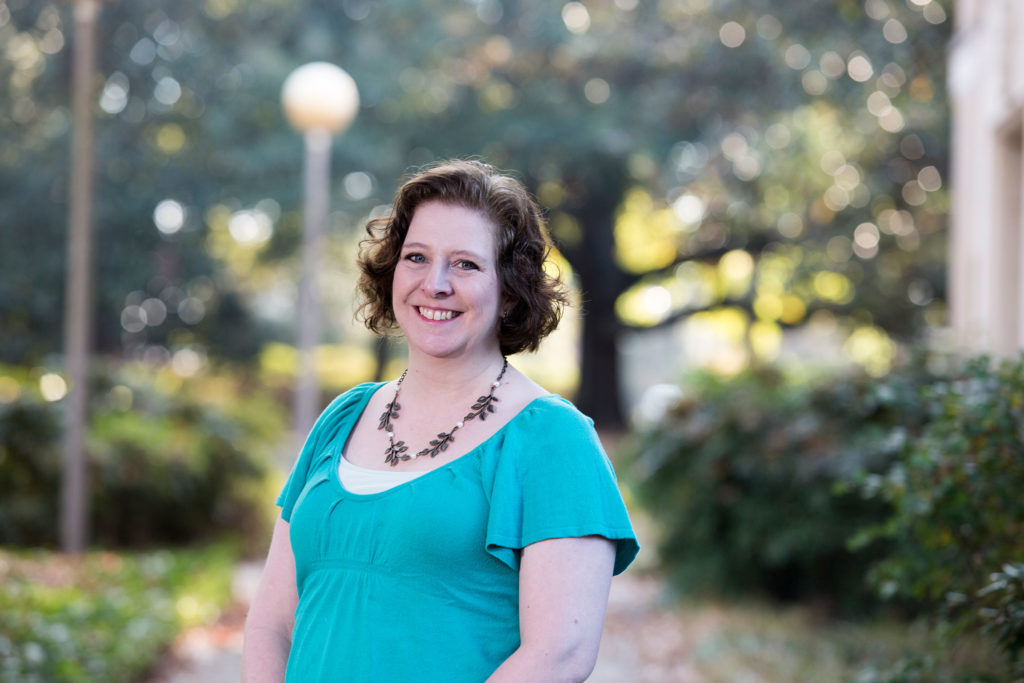Athens, Ga. – Training service coordinators in low-income public housing to better assist aging residents could not only improve community members’ health outcomes but also save the government money in hospital visits, nursing home stays and rehabilitation costs, according to an article by researchers at the University of Georgia published recently in the Journal of Housing for the Elderly.
These coordinators would be trained to facilitate aging in place, a concept the Centers for Disease Control and Prevention defines as the “ability to live in one’s own home and community safely, independently and comfortably, regardless of age, income or ability level.”
Most Americans want to remain in their homes as they age, but for low-income citizens living in public housing complexes, it often isn’t possible, said Heidi Ewen, lead author of the article and an assistant professor in the financial planning, housing and consumer economics department of the College of Family and Consumer Sciences.
“Nobody wants to lose their home because of some type of health crisis,” said Ewen, who also has a joint appointment in UGA’s Institute of Gerontology in the College of Public Health. “But when people living in public housing have health crises that result in them ending up in nursing homes or rehabilitation centers, they may end up losing their apartments, which are rented on a month-to-month basis. It’s a really precarious situation for them.”
In addition to being a time of uncertainty for the renters, hospital and nursing home stays are costly to the government.
“It’s very expensive because the government is not only paying 70 percent of their housing, it’s paying for all of their medical care as well,” Ewen said. “So it’s actually cheaper for people to age in place if they can get the resources they need to help them live there.”
The researchers propose a new comprehensive training protocol for service coordinators in public housing that will help them better address the needs of their aging residents. The curriculum will expand current service coordinator training on basic aging and the aging services network to include housing law, minority aging and health disparities, and health promotion programming.
“Local senior centers offer programs on things like diabetes management education so people can come in, get that information and develop a support network,” Ewen said. “And that’s great if those people can actually get to the senior center for those types of programs, but many cannot.”
The service coordinators would bring chronic disease management and fall prevention courses into the housing facilities so that residents could learn how to deal with their illnesses in their homes rather than having to arrange for transportation.
They could also advocate for design changes in the buildings. The Department of Housing and Urban Development constructed most of America’s housing for the elderly, known as Section 202 housing, starting in the 1950s. So the design features, including 5-foot-high light switches and power outlets that are low to the floor, aren’t conducive to aging in place, Ewen said.
“If people are living in there for 10 to 20 years and their health starts to decline, it can be difficult for them to manage that living environment,” she said. “And they don’t have the means to move somewhere that might be newer with more accommodations, like universal design features that are usable by everyone.”
Lever handles, for instance, make a huge difference for seniors whose arthritis or other ailments prevent them from being able to turn a doorknob. Lower light switches are also helpful for people in wheelchairs. These small changes to Section 202 housing could make it possible for more residents to stay in their homes as they get older.
Now the goal for the researchers is to get a grant to fund several service coordinator positions in Section 202 housing in the Athens area to see whether the health outcomes of the residents improve.
The researchers are also looking to secure funding to place kiosks in the lobbies of the public housing buildings that will enable residents to periodically update their needs and upcoming medical services. Using these kiosks, residents will be able to electronically send a note to the service coordinator and appropriate community organization to help arrange transportation and services.
The article is available at http://www.tandfonline.com/doi/full/10.1080/02763893.2016.1268555. Co-authors include Denise Lewis, Department of Human Development and Family Science; Andrew Carswell, Department of Financial Planning, Housing, and Consumer Economics; Kerstin Emerson, Department of Health Policy and Management; Tiffany Washington, School of Social Work; and Matthew Smith, Department of Health Promotion and Behavior.
